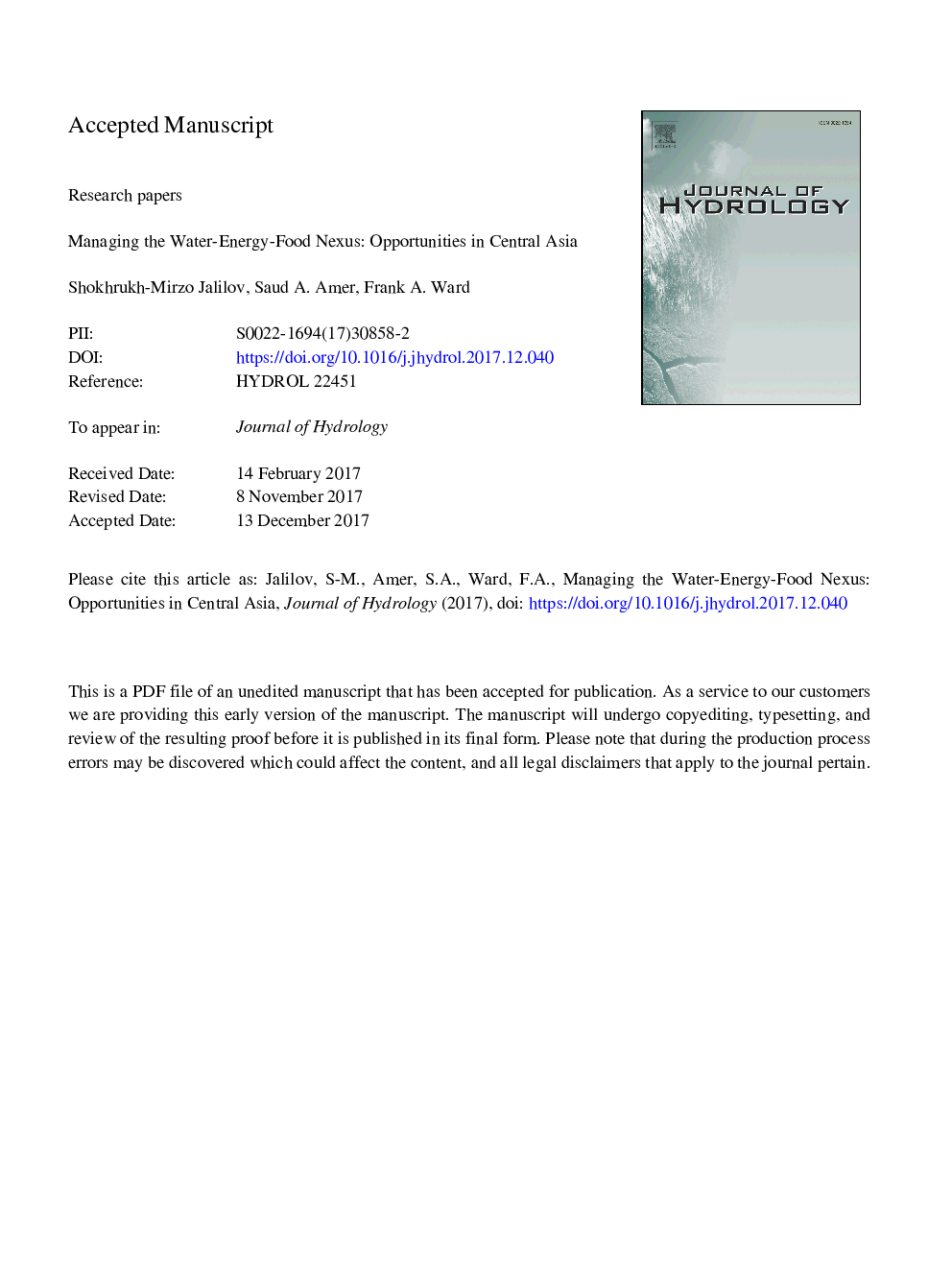| Article ID | Journal | Published Year | Pages | File Type |
|---|---|---|---|---|
| 8895032 | Journal of Hydrology | 2018 | 55 Pages |
Abstract
This article examines impacts of infrastructure development and climate variability on economic outcomes for the Amu Darya Basin in Central Asia. It aims to identify the most economically productive mix of expanded reservoir storage for economic benefit sharing to occur, in which economic welfare of all riparians is improved. Policies examined include four combinations of storage infrastructure for each of two climate futures. An empirical optimization model is developed and applied to identify opportunities for improving the welfare of Tajikistan, Uzbekistan, Afghanistan, and Turkmenistan. The analysis 1) characterizes politically constrained and economically optimized water-use patterns for these combinations of expanded reservoir storage capacity, 2) describes Pareto-Improving packages of expanded storage capacity that could raise economic welfare for all four riparians, and accounts for impacts for each of two climate scenarios. Results indicate that a combination of targeted water storage infrastructure and efficient water allocation could produce outcomes for which the discounted net present value of benefits are favorable for each riparian. Results identify a framework to provide economic motivation for all riparians to cooperate through development of water storage infrastructure. Our findings illustrate the principle that development of water infrastructure can expand the negotiation space by which all communities can gain economic benefits in the face of limited water supply. Still, despite our optimistic findings, patient and deliberate negotiation will be required to transform potential improvements into actual gains.
Keywords
Related Topics
Physical Sciences and Engineering
Earth and Planetary Sciences
Earth-Surface Processes
Authors
Shokhrukh-Mirzo Jalilov, Saud A. Amer, Frank A. Ward,
